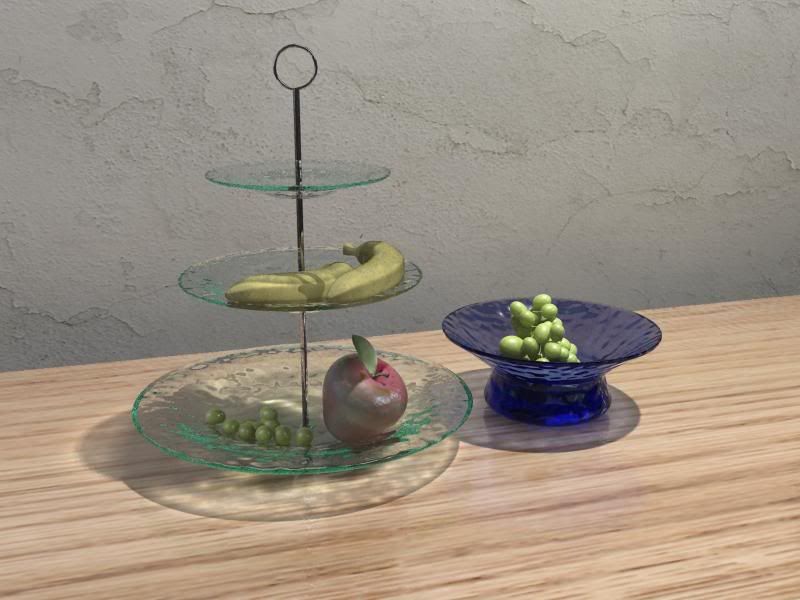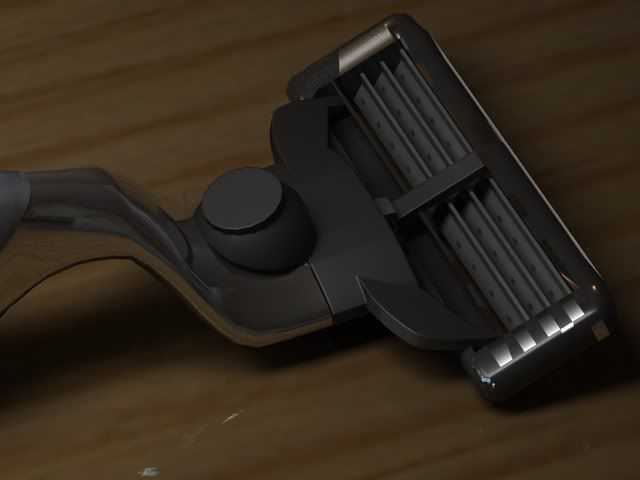
I just saw that the this
very cool tutorial about my mental ray skin shader (good old misss_fast_skin), which I enjoyed very much, and I wholeheartedly recommend as a good tutorial on how to use the shaders.
Alex Alvarez has made an over two hours long video tutorial in three parts which can be downloaded from the Gnomon Workshop webpage. It's very informative and teaches many cool tricks.
A couple of details about the tutorial, though, that I thought was worth nothing:
Radii stuffThe tutorial started out by "trial and error" to find the various scattering radii. While this may be "good" as a "understand what does what" thing, I really missed my "rules of thumb" from my written SSS tutorial (available
here) about the various values for the scatter radii (i.e. that the subdermal should be "about an inch" and the epidermal "about a third of an inch"). The defaults that are there are actually good
if your scene is in millimeters.
Color mapping stuff
Generally, colors are
not mapped in the "overall"
unless you "know" what you are doing. Yes - as Alex finds out, doing it may make more
intuitive sense, and may appear more "predictable" if one expects the "final color" to "look" as the "texture color".
However, the whole intended workflow of the shader is actually
not to do that!
Because a lot of the "red tone" of skin should actually come from the subdermal and epidermal layers and
actually hardly be present in the color map at all.
I.e. when the shader is "fully" utilized, the color map shouldn't "look" like skin at all; it should look like the skin would look if you peeled it off it's fleshy underpinning (yuck!).
It is true that some highly pigmented areas such as skin "moles" or the lip colors
indeed map better in the "overall"... this is because they are a layer "on top" of the rest of the skin and actually "filter" the underlying light (blocking it) and for the lips or for skin moles, mapping "overall_color" indeed makes sense.
I fully understand that this "intended" workflow is very counter-intuitive to the lay person, but skin is such a complex substance with a lot of interaction of light between flesh, blood and the actual epidermal skin layer, it
can't be as simple as "map a color map to a Blinn".
Bump stuffI reall missed any mention about that the "appearance" of the bumps is strongly defined by the "balance" between the "diffuse" and "epidermal" layers... because the bump only applies to the unscattered "diffuse" layer, and the "epidermal" layer looks very
similar to the diffuse layer, but slightly scattered
and without bumps - hence one of the most important "look development" tools for the skin is to balance these two. I would actually want to see more of that rather than Alex's attempt to "blur" the bumpmap, which I do
not think one should do.
FresnelOh, I hate to break it to Alex, but fresnel is pronounced "frenell" [
freɪ 'nel] - 'tis the name of a
french dude. ;)
ReflectionsThe fact that Alex used something other than the build in reflectivity I can understand... but I pity the choice of the standard Maya "Blinn". I wholeheartedly suggest to use the
mia_material for the reflectivity layer of skin,
especially utilizing the "refl_hl_only" flag for superfast "skinny" reflections - more on that in a future post here.
I also strongly suggest to have a high "edge" reflectivity at all times, and generally let the specularity levels "follow" the levels of reflections (after all, "specularity" is really only just reflections of light sources...)
SpecularitiesThe reason the skin shader has 2 layers of specularity isn't really to support different "areas" of skin, it's actually to change the shape of the specular "lobe". The traditional "phong" model with it's "cosine-raised-to-a-power" shaped lobe isn't really very suitable for skin, but by blending a couple of such lobes you can get a
combined effect that is.
But all this whiny nit-picking aside, the tutorial is a fantastic piece of work, and I'm impressed with the time Alex took to make it (it's over two hours long!). It's well worth a download for anyone into skin shading in mental ray!
Thanks Alex for making it, and I hope you take my comments in a constructive manner!
/Z


 If you want to have some cool tools for handling the Arch & Design material in Max 9 (including converting other materials - including vRay materials - into Arch & Design) you can use this script.
If you want to have some cool tools for handling the Arch & Design material in Max 9 (including converting other materials - including vRay materials - into Arch & Design) you can use this script.


 I just saw that the this very cool tutorial about my mental ray skin shader (good old misss_fast_skin), which I enjoyed very much, and I wholeheartedly recommend as a good tutorial on how to use the shaders.
I just saw that the this very cool tutorial about my mental ray skin shader (good old misss_fast_skin), which I enjoyed very much, and I wholeheartedly recommend as a good tutorial on how to use the shaders.